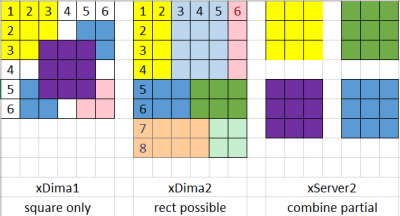Page 1 of 1
calculate a large number of routes
Posted: Tue Jan 16, 2018 2:58 pm
by puissancei
Hello,
I want to calculate a very large number of routes (500 000 GPS coordinates) to
Is it possible with xServer and how ?
Re: calculate a large number of routes
Posted: Tue Jan 16, 2018 3:44 pm
by Bernd Welter
Hello Michel,
maybe I can answer this question if I know more about the expectation towards the result.
Do you want to
- match the 500.000 coordinates of a driven route to the street network? (sounds a bit like "we trackes the position of a truck every second for almost a complete week)?
- optimize the sequence?
My gutfeeling says "it's not a route" what you want...
Best regards,
Bernd
Re: calculate a large number of routes
Posted: Tue Jan 16, 2018 3:47 pm
by puissancei
I would like to calculate a distance matrix with all these coordinates for optimization purposes
Re: calculate a large number of routes
Posted: Tue Jan 16, 2018 4:23 pm
by Bernd Welter
Hello MIchel,
you want to calculate a 500.000x500.000 matrix? That's a freaking challenge...
With xServer2 you can slice the matrix into smaller pieces.
- Imagine the set of coords is A/B/C/.../X/Y/Z.
- Logically spoken you want (A/B/.../Y/Z) : (A/B/.../Y/Z)
- Similar to union (A/B/C):(A/B/C) + (A/B/C):(D/E/F)...(A/B/C):(X/Y/Z) + (E/F/G):(A/B/C) + (X/Y/Z):(X/Y/Z)
Anyhow:
the disk space required for a 500.000 matrix is 250.000.000.000 x 6 bytes = 1.5 TB

What I recommend: depending on the size of the planning problem: calculate the temporary distance matrix that is required for the stops of the planning problem... e.g. 50 vehicles (depots), 2000 orders... This one can be calculated on the fly.
Isn't that a better approach?
Regards Bernd
Re: calculate a large number of routes
Posted: Wed Jan 17, 2018 8:05 am
by puissancei
Thank you Bernd.
I have the elements for work.... or not !
Have a nice year 2018.
Re: calculate a large number of routes
Posted: Wed Jan 17, 2018 8:25 am
by Bernd Welter

- Little comparison between xDima 1 and xDima 2.
While xDima 1 is restricted to square matrices (whenever A:B is calculated we also compute B:A, furthermore we always extend the shape of a MxM matrix to an NxN matrix) the xDima 2 is more flexible. It allows you define non-symmetric rectangle shapes (e.g. list of starts differs from the list of destinations). Furthermore it is possible to retrieve the logical information of a very large matrix by simply slicing it into non overlapping areas (3. example)